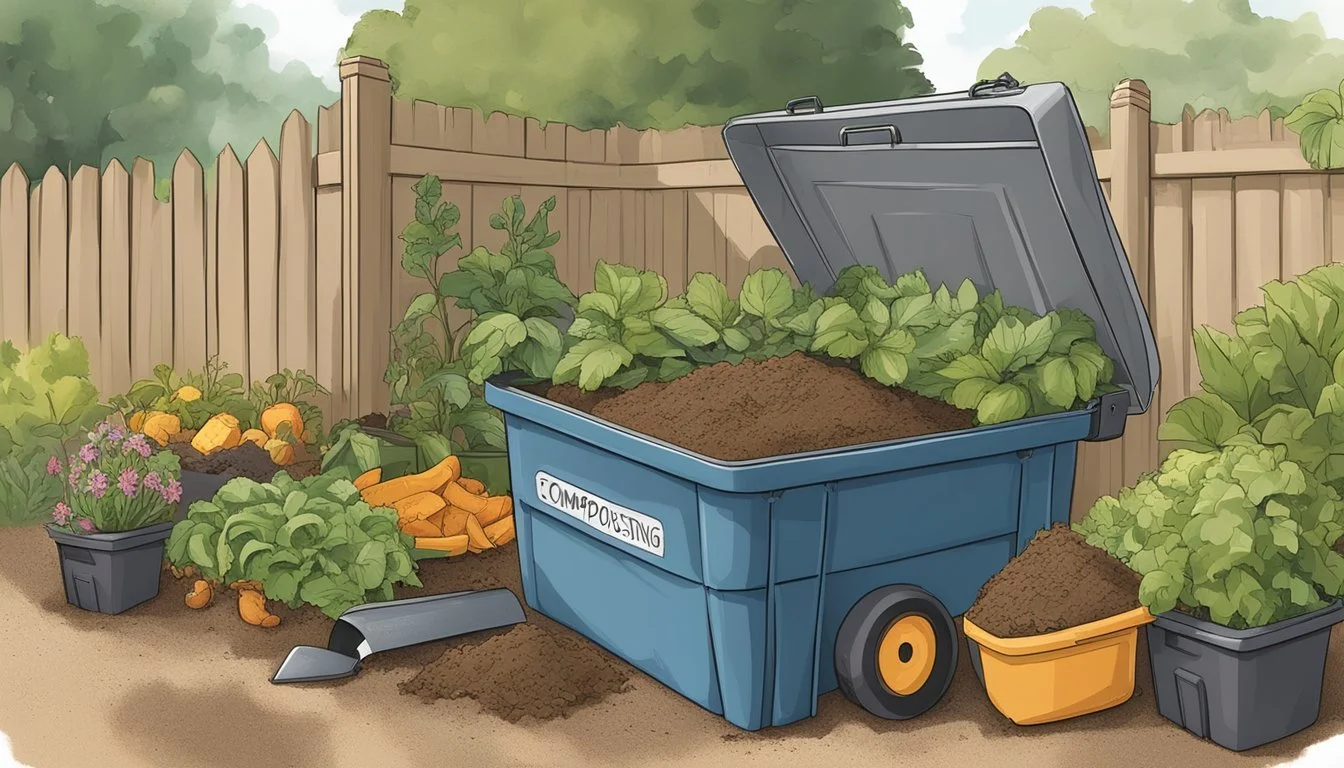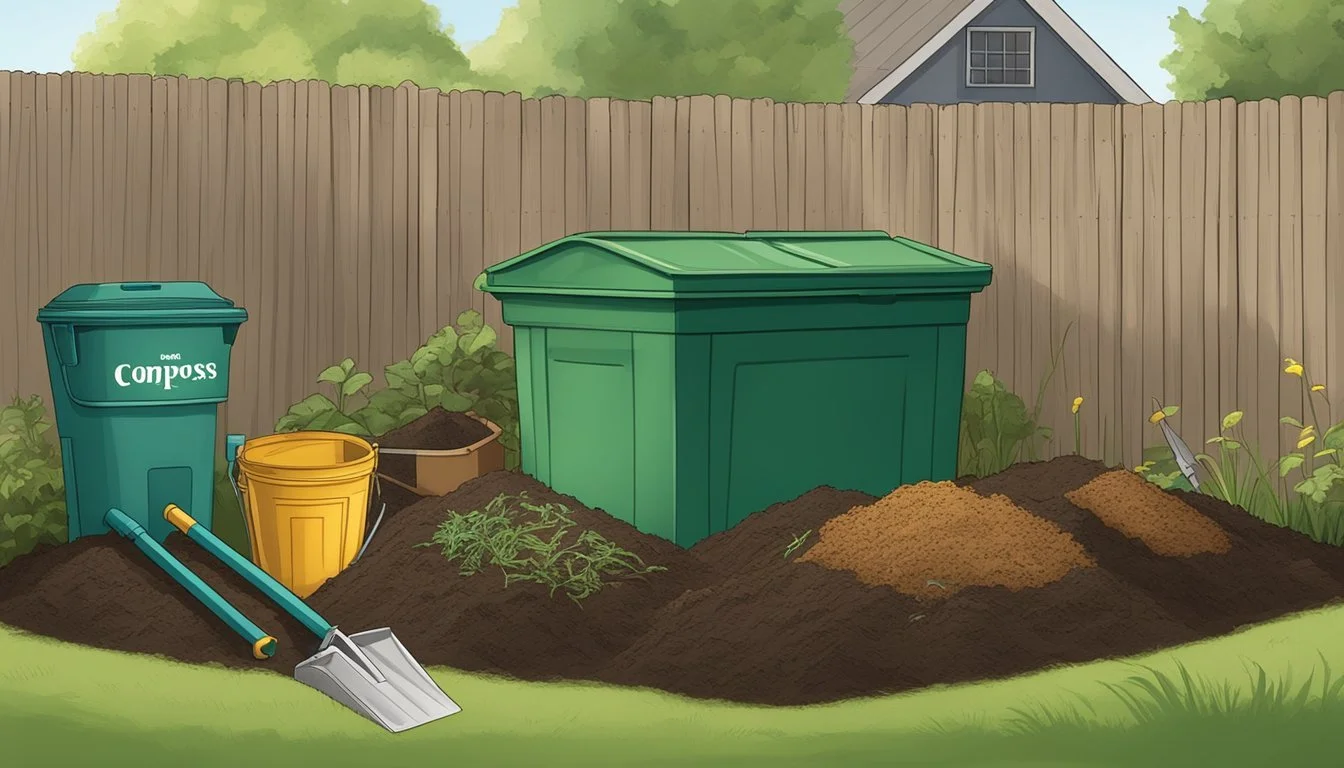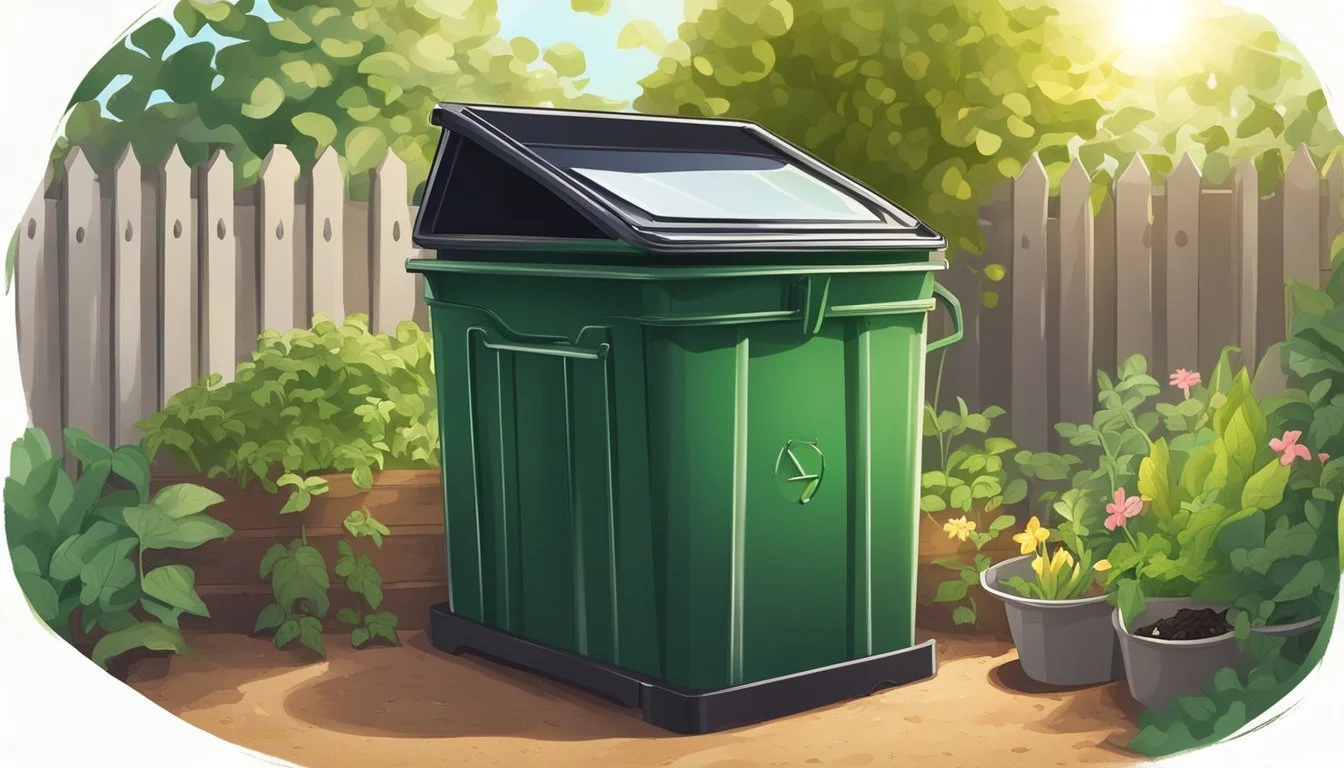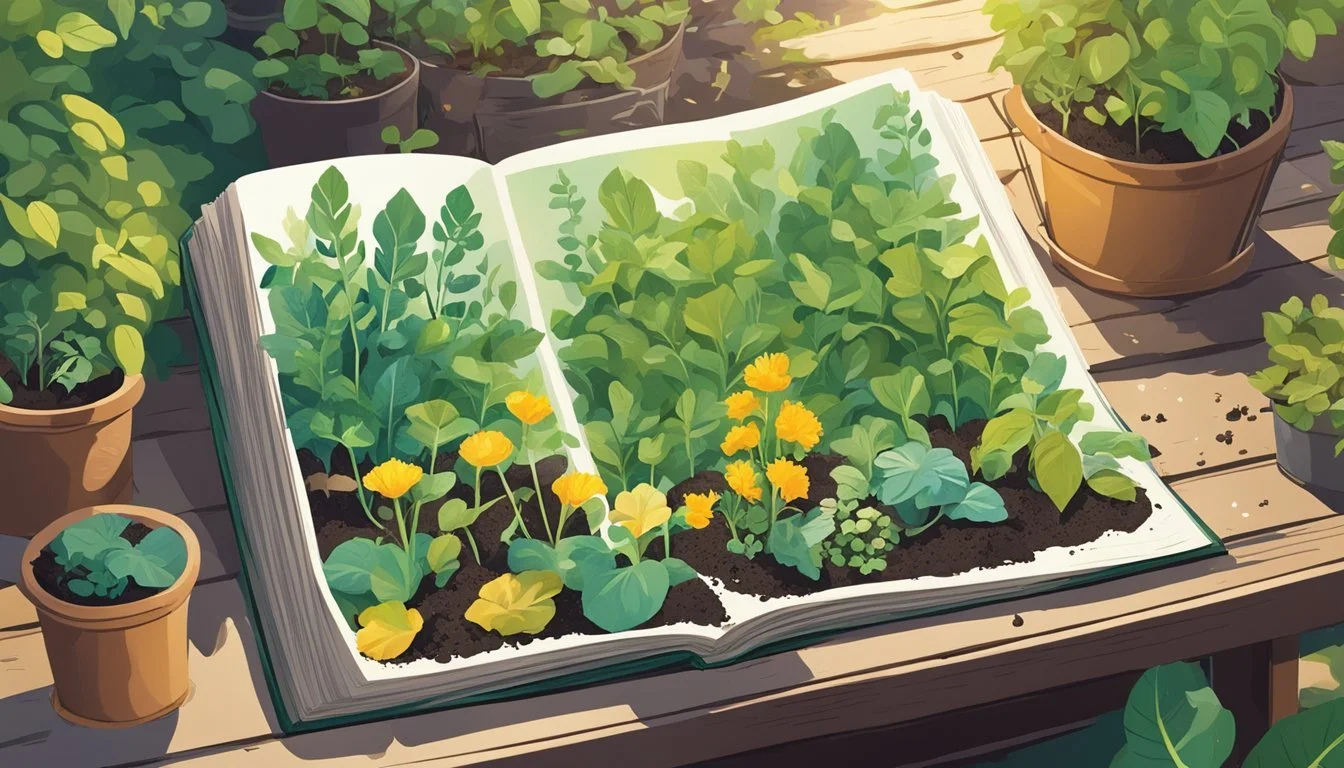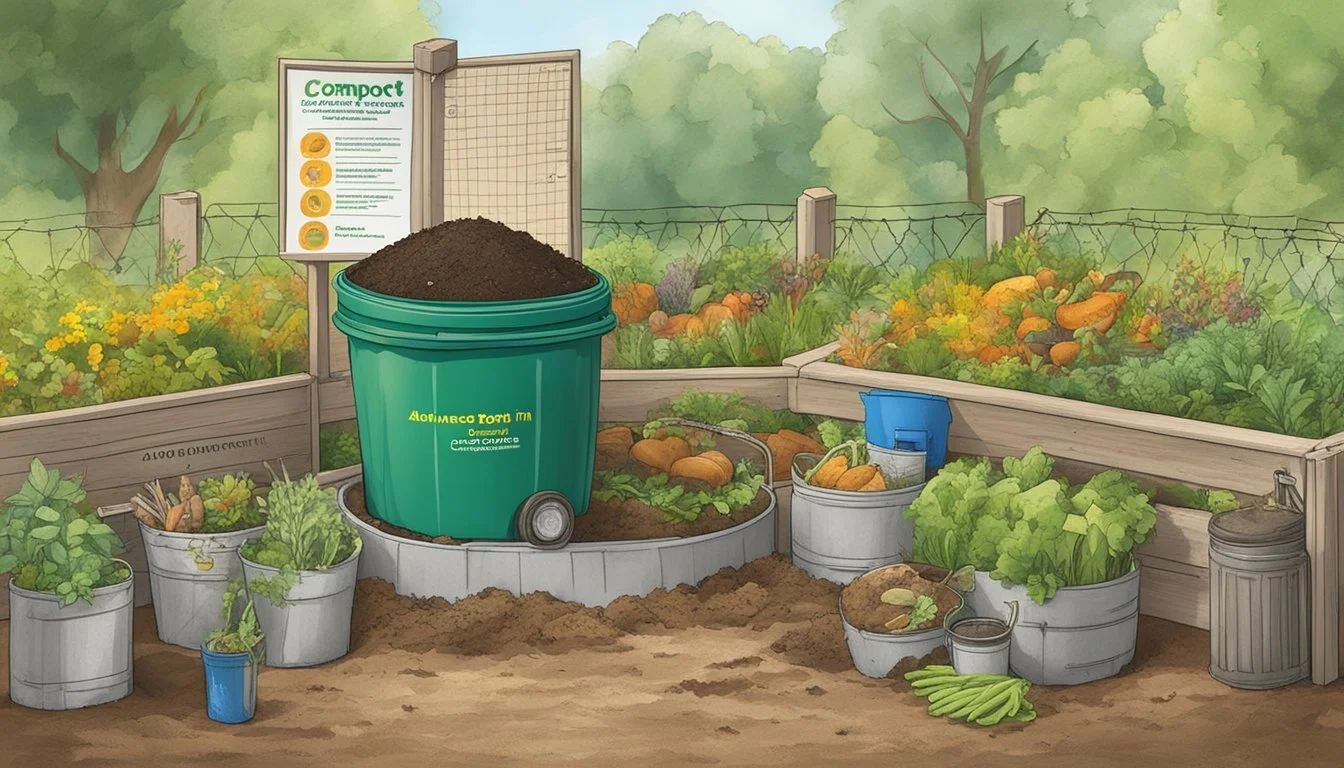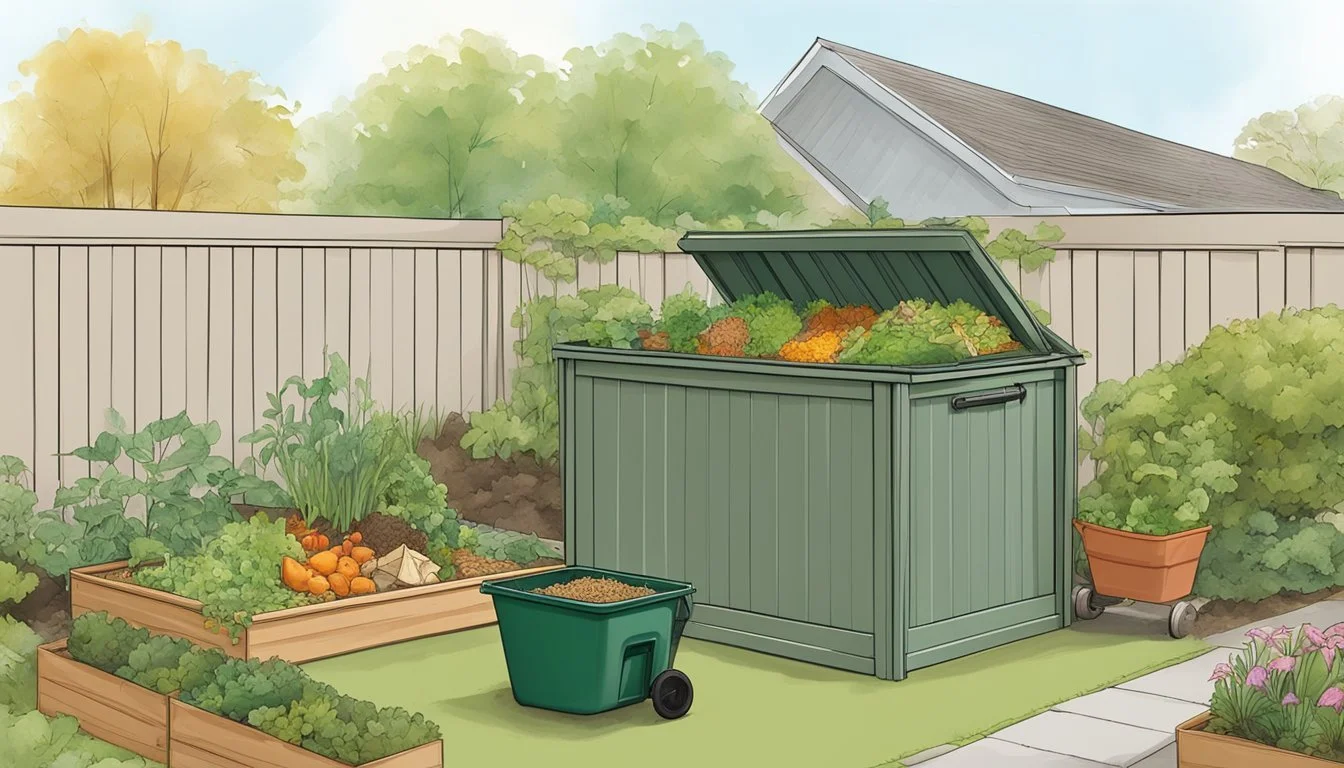Guide to Composting in Concord, CA
Essential Tips for a Greener Community
Composting has become a well-regarded solution for reducing waste and improving soil health in many communities. In Concord, CA, residents can turn kitchen scraps and yard waste into valuable garden amendments through the process of composting. With an emphasis on sustainability, Concord offers a range of options and resources for individuals looking to start composting, whether in their backyards or through city programs. The practice supports the city's waste reduction efforts and aligns with California's broader initiatives to minimize landfill use and decrease greenhouse gas emissions.
Understanding the basics of composting is essential for success. It involves combining organic materials, such as food scraps and yard debris, which break down over time to create nutrient-rich soil. The process is facilitated by proper balance of green materials, which provide nitrogen, and brown materials, which supply carbon. Residents also need to maintain adequate moisture and aeration in their compost piles to support the decomposition process. For those in Concord interested in composting, accessing local guidance and support is straightforward, thanks to resources provided by the city and county.
Local programs and workshops are available to educate residents about the best practices for home composting. These resources also detail how composting can benefit both the environment and gardeners, creating a sustainable loop that supports local ecosystems. Additionally, the city's recycling and waste reduction efforts complement these programs by offering information on organics collection services, designed to assist businesses and multi-residential complexes in adhering to California's recycling and waste management laws. Through these efforts, Concord demonstrates a strong commitment to environmental stewardship and provides its citizens with the tools needed to contribute positively.
Composting Basics
In Concord, one transforms organic waste into a nutrient-rich amendment for soil through the simple, natural process of composting. This section reveals the essence of composting and its numerous benefits for soil health and environmental sustainability.
What Is Composting?
Composting is the controlled decomposition of organic matter into compost, which can then be used to enhance soil quality. This process involves layering green materials, like fruit peels and grass clippings, which are high in nitrogen, with brown materials, such as dried leaves and branches, rich in carbon. The natural breakdown occurs thanks to the action of microorganisms, with the resulting compost offering a wealth of nutrients for soil.
Green materials (Nitrogen-rich): Vegetable scraps, coffee grounds, grass clippings
Brown materials (Carbon-rich): Dried leaves, branches, paper napkins
In Concord, residents are encouraged to start composting by following local guidelines, which can be found in resources such as the Patch, detailing how to effectively initiate the composting process.
Benefits of Composting
Composting offers a multitude of benefits for both the environment and garden soil. Not only does it reduce landfill waste by recycling organic materials, but it also suppresses plant diseases and pests, reduces the need for chemical fertilizers, and encourages the production of beneficial bacteria and fungi that create a nutrient-rich, soil-like material.
Environmental Impact: Cuts down on methane emissions from landfills and lowers carbon footprint.
Soil Improvement: Introduces vital nutrients to the soil, improves soil structure, and promotes soil fertility.
The process of composting and the utilization of the end product can be pivotal in building sustainable, healthy gardens. The Old Farmer's Almanac provides insight into how compost creates a nutrient-rich soil amendment that is highly beneficial for plant growth.
Setting Up Your Composting System
To establish an effective composting system in Concord, CA, homeowners should strategically select a location, choose the appropriate composting bin, and identify suitable green and brown materials for a balanced compost mix.
Selecting the Right Location
A suitable location for a home composting setup maximizes efficiency in both drainage and exposure to elements. The area should allow for easy access to add materials and should also have good contact with soil to encourage microorganisms. It's essential to find a spot that provides partial sunlight, which helps maintain the necessary warmth for composting without overheating, and is shielded from excessive wind that could dry out the pile.
Choosing a Composting Bin
When selecting a bin for composting, homeowners have various options. The size of the bin should be compatible with the household's waste output and available space. Composting bins can range from open piles to enclosed tumblers. Enclosed bins are preferable for controlling moisture and keeping pests out. It's also important to ensure the bin allows for adequate air circulation and has a way to collect excess water that may leach out.
Identifying Green and Brown Materials
Successful composting requires a balance between nitrogen-rich 'green' materials and carbon-rich 'brown' materials. Green materials include vegetable scraps, grass clippings, coffee grounds, and tea bags, which add moisture and nitrogen. Conversely, brown materials such as dry leaves, straw, or sawdust provide carbon and help aerate the compost by creating space for air to flow. A general guideline is to use a mix of roughly equal parts green and brown materials by volume for a well-balanced compost.
Materials to Compost
Successful composting in Concord, CA, begins with knowing the right materials to include in your compost pile. This ensures efficient decomposition and results in a rich organic amendment for your garden.
Ideal Composting Materials
For a healthy compost mix, it's essential to balance green (nitrogen-rich) and brown (carbon-rich) materials.
Green Materials:
Vegetable scraps
Fruit waste
Grass clippings
Tea bags
These green items supply your compost with necessary nitrogen, helping microbes thrive and break down organic material faster. Grass clippings are particularly useful, but they should be mixed well with brown materials to prevent clumping and odor.
Brown Materials:
Twigs
Hay
Shredded newspaper
Cardboard (non-waxy)
Wood chips
Dry leaves, twigs, and other brown matter provide the carbon component, giving structure to your compost pile and balancing moisture. It's also important to shred materials like newspaper and cardboard to speed up decomposition.
Items to Avoid in Your Compost
Not everything can or should be composted due to the risk of odors, pests, or disease.
Food to Exclude:
Bones
Dairy products
Adding bones and dairy can attract rodents and cause a rancid smell.
Plant Material to Exclude:
Weed seeds
Diseased plants
Incorporating weed seeds and diseased plants may spread unwanted growth and illness when the compost is used.
Inorganic and Harmful Items:
Inorganic materials (plastics, metals)
Treated wood and lumber
Avoid plastics, metals, and treated wood, which do not break down and can release harmful chemicals into your compost and garden.
By carefully selecting the appropriate organic materials and steering clear of detrimental items, Concord residents can create enriching compost for their gardens and reduce landfill waste.
Maintaining Your Compost
Effective maintenance is crucial for a healthy compost system in Concord. Ensuring appropriate moisture, aeration, and temperature control are the cornerstones for successful composting.
Balancing Moisture and Airflow
A well-maintained compost pile has the moisture content of a wrung-out sponge. One should add water if the compost is too dry, or incorporate dry, brown materials like leaves or straw if it’s too wet. Proper moisture is necessary for the microorganisms to break down organic material efficiently. Regularly checking and balancing moisture levels alongside ensuring sufficient airflow will prevent the pile from becoming too damp or smelly.
Turning and Aeration
Periodic turning of the compost pile is essential for introducing air into the system. Air is crucial to support the aerobic bacteria that expedite the composting process. Turn the pile every few weeks with a pitchfork or shovel to mix the materials, which will also redistribute moisture and speed up decomposition. For those using compost tumblers, rotating the bin regularly can achieve the same aeration and mixing goals.
Monitoring Temperature
Compost piles should reach a temperature between 90°F and 140°F, which can be monitored with a compost thermometer. High temperatures indicate the microbes are actively decomposing the materials. If the temperature is too low, additional green materials or water might be necessary to reactivate the pile. Conversely, cooling measures or turning the compost may be required if temperatures exceed the optimal range as it can kill beneficial microorganisms.
Maintaining the balance of these elements ensures that composting remains a productive and environmentally friendly practice for residents in Concord, CA.
Composting Techniques
When considering composting techniques in Concord, California, it is essential to understand the different methods available and how they each play a role in efficient waste management and soil enrichment.
Hot Composting
Hot composting is a method that accelerates the decomposition process through the maintenance of elevated temperatures within the compost pile. This technique requires a balance of nitrogen-rich "greens" and carbon-rich "browns," a routine mixing schedule to introduce oxygen, and adequate moisture levels. It is characterized by the following specifics:
Temperature Range: Optimal temperatures for hot composting are between 135-160°F.
Time Frame: The process can produce finished compost typically in about 18 to 28 days if turned frequently.
Properly managed hot composting can quickly break down organic waste into rich, usable compost.
Cold Composting
Cold composting is a simpler, less labor-intensive process than hot composting but requires significantly more time. This method involves simply piling up garden and kitchen waste and letting it decompose over time. Key points include:
Temperature: The pile remains at or near the ambient outdoor temperature.
Time Frame: Decomposition can take several months to a couple of years.
Cold composting is best suited for gardeners who prefer a more hands-off approach and are not in a hurry to use the compost.
Vermicomposting
Vermicomposting utilizes the natural digestion process of specific species of earthworms to convert organic matter into high-quality compost. This technique focuses on:
Worm Species: Red wigglers (Eisenia fetida) are commonly used for this purpose.
Time Frame: The timeline is variable and depends on factors such as the quantity of waste and the number of worms.
Vermicomposting is ideal for indoor composting or smaller-scale outdoor operations. It results in nutrient-rich compost known as worm castings, which are excellent for plant growth.
Using Finished Compost
Successful composting provides a nutrient-rich amendment for gardens. Understanding when compost is ready to use and how to apply it ensures that plants benefit fully from this natural enhancer, improving soil structure and fertility.
When is Compost Finished?
Compost is considered finished when it's dark, crumbly, and has an earthy smell. It no longer emits heat and its original ingredients are indistinguishable. This process typically takes anywhere from three to six months. Finished compost should be free from large chunks and continue to decompose without generating any heat.
Applying Compost to Your Garden
To enrich the garden soil, apply a 2-3 inch layer of finished compost and work it into the top 6 inches of soil before planting. This incorporation can aid in enhancing soil structure, increasing water retention, and introducing beneficial microorganisms. For established plants, side-dress with compost by gently working it into the soil around the base of the plants. Remember, a little goes a long way—using too much can overwhelm the plants with nutrients.
For potted plants or raised beds, mix finished compost with potting soil at a ratio of 1:4 for optimal nutrient balance. Applying compost to gardens contributes significantly towards a healthier, more resilient plant life by improving the nutritive value of the soil.
Composting in Contra Costa County
Composting initiatives in Contra Costa County are designed to reduce waste and promote sustainable living across various cities, including Martinez, Pleasant Hill, and Walnut Creek. These efforts align with California's statewide push to manage organic waste more responsibly, guided by agencies like CalRecycle.
Local Regulations and Resources
Contra Costa County offers robust resources and guidelines to facilitate home composting for residents. Through the county's recycling and waste management website, individuals can access information on how to compost effectively and in accordance with local regulations. The Contra Costa County Recycling, CA program educates the public on reducing yard waste through composting. The CalRecycle Home Page also provides best practices for creating a composting blend using equal parts green or wet material for nitrogen with brown or dry material for carbon.
Contact Information:
Phone: 925-655-2703
Recycling Hotline: 800-750-4096
Permits are not typically required for residential composting in Contra Costa County. However, it is important for composters to follow local guidelines to prevent attracting pests and generating odors.
Community Composting Initiatives
Several cities within Contra Costa County have embraced community composting initiatives. The City of El Cerrito offers a community garden program that includes composting. In cities like Richmond and Pinole, community gardens have adopted composting initiatives to promote food waste reduction and to create a rich, natural fertilizer for community use.
Contra Costa County encourages residents to participate in these programs to enhance their gardening programs and contribute to the health of their local environment. Community efforts such as the Free Virtual Home Composting Workshop in Martinez held by the county offer training and support for residents of all cities, including Hercules, Pinole, Richmond, North Richmond, Danville, Orinda, San Ramon, and Walnut Creek. These workshops can be found through the county's official channels and provide actionable tips to get started with composting.
By utilizing these resources and engaging in community composting initiatives, residents of Contra Costa County can play a significant role in California's overarching goal to manage organic waste sustainably and conscientiously.
Advanced Topics in Composting
In Concord, California, mastering composting beyond the basics demands an understanding of climate-specific strategies, cutting-edge technology, and educational opportunities. This section explores ways to enhance local compost operations and engage with the community through advanced composting methods.
Managing Compost in Different Climates
In Concord's Mediterranean-like climate, balancing moisture levels in your compost pile is crucial. Dry conditions require regular watering to maintain adequate moisture, while wet periods might call for protective covers to prevent oversaturation. Composting bins play a vital role in this; enclosed bins can conserve moisture and accelerate decomposition, while allowing airflow to avoid anaerobic conditions, which can slow the process and create odors.
Innovations in Composting Technology
Composting technology is evolving with systems designed to optimize the process. Innovations like tumblers allow for easier aeration, speeding up decomposition, while solar-assist composters use the sun's energy to increase temperatures and break down organic matter more efficiently. These technologies can be particularly beneficial in California's varied climate zones, where composting conditions can differ greatly.
Educational Resources and Workshops
California is home to an array of resources for those interested in advancing their composting knowledge. The California Alliance for Community Composting offers support and development for community projects, while the CalRecycle page lists Master Composter classes which provide certification and training in sustainable composting practices. Engaging in local workshops not only hones individual skills but also fosters a community focused on sustainability.
Addressing Common Questions
Starting a compost bin in Concord, CA is an excellent way to manage organic waste and contribute to recycling efforts. However, residents often have questions regarding the maintenance of their compost bins and how to avoid attracting unwanted pests.
Troubleshooting Your Compost Bin
Sometimes, a compost bin does not break down materials as expected. This issue often arises due to an imbalance of nitrogen-rich green materials and carbon-rich brown materials. It's recommended to maintain a ratio of 1:1 for green and brown materials to ensure proper composting. For instance, if you notice your compost is too wet and smells, add more brown materials to absorb excess moisture and rebalance the bin. Conversely, a dry and slow-decomposing pile may need more green materials or water to reactivate the process.
Another common issue pertains to the size of the material. Larger items take longer to decompose. One should chop or shred large pieces of organic waste to accelerate composting. For more detailed guidance, one may consider attending a workshop offered by local organizations like Urban Worm Composting.
Reducing Unwanted Pests
The concern of attracting pests like rodents and insects to a compost bin is legitimate. To mitigate this risk, one should ensure that the compost bin has a secure lid and is well-maintained. Avoiding the addition of meat, dairy, and oily foods can significantly reduce the likelihood of pest problems. Moreover, regularly turning the compost can discourage pests from nesting in the pile.
For community-centric composting solutions which may offer a more controlled environment, one can explore programs mentioned on the CalRecycle Home Page. Regular maintenance and correct composting practices typically address the common concerns associated with home composting systems, and many educational resources are available for Concord residents looking to improve their composting techniques.
The Environmental Impact of Composting
Composting, an integral component of zero-waste strategies, stands out as an effective method of reducing waste headed for landfills and diminishing carbon footprint associated with solid waste management.
Composting and Waste Reduction
Composting diverts considerable amounts of waste from landfills by transforming organic matter into nutrient-rich soil amendments. In Concord, for example, organizations like Urban Worm Composting facilitate local composting efforts by hosting workshops and providing necessary materials. By actively engaging in composting, residents effectively reduce municipal solid waste and contribute to the sustainability of their communities.
Benefits: Reduces landfill waste, creates valuable recycled material, promotes soil health.
Quantity of Waste Diverted: Significant reduction in the volume of organic waste.
Composting and Carbon Footprint
The process of composting not only curbs the inflow of waste into landfills but also impacts carbon dioxide and methane emissions. By breaking down organic material aerobically, composting prevents methane production, a potent greenhouse gas typically generated under the anaerobic conditions of landfills. Additionally, compost, when applied to gardens and green spaces, sequesters carbon, further mitigating the facility's carbon footprint.
Carbon Reduction: Diminishes methane emissions from landfills.
Soil Health Improvement: Compost enhances soil structure, nutrient content, and carbon sequestration.
Organizations like Let's Go Compost highlight the role of composting in reducing greenhouse gas emissions by diverting organic waste from landfills. It stands as a testament to composting's dual role in waste reduction and carbon cycle management, making it an indispensable element of recycling and environmental preservation efforts.
Community Engagement and Support
Community involvement is essential for the success of composting in Concord, CA. Engaging residents and providing robust support systems can help ensure composting initiatives thrive.
Promoting Composting in Local Communities
To encourage the adoption of composting practices, educational campaigns and community workshops are crucial. They inform residents about the environmental benefits of composting, such as reducing landfill waste and improving soil health. Local organizations like the California Alliance for Community Composting offer resources and guidance on starting and maintaining community composting projects. Efforts may include:
Door-to-door education to directly engage with community members.
Interactive online platforms where people can learn about composting methods.
Providing Feedback and Support
Ongoing support is vital for community members who participate in composting programs. Providing channels for feedback helps organizations to address concerns and improve systems. This might involve:
An email hotline for questions or issues related to composting.
Regular community meetings for updates and shared learning experiences.
Maintaining a clear line of communication through email newsletters can also keep participants informed about program developments and available resources.

